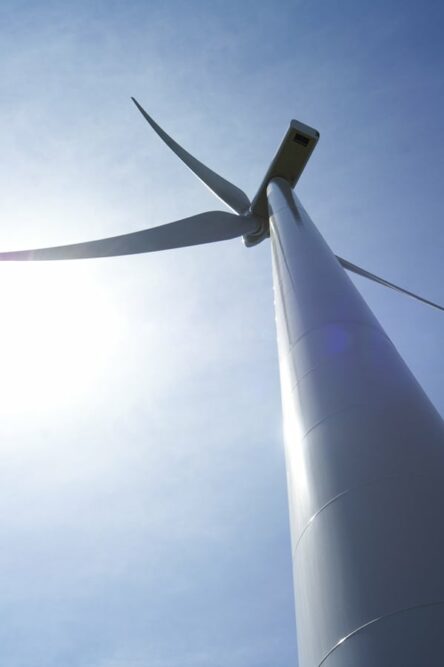
Home » PNNL leads, collaborates on technologies to make energy cleaner, more efficient
PNNL leads, collaborates on technologies to make energy cleaner, more efficient

January 10, 2016
By Francis White
Three technologies — a computational tool to improve power grid planning, a process to create biofuel from kelp and a hybrid device that makes hydrogen and stores energy — are being developed by Pacific Northwest National Laboratory and its partners under new projects just announced by the Department of Energy’s Advanced Research Projects Agency-Energy, or ARPA-E.
“The ARPA-E projects selected today highlight how American ingenuity can spur innovation and generate a wide range of technology options to address our nation’s most pressing energy issues,” said Energy Secretary Ernest Moniz. “As we look beyond COP21 (the Paris climate talks), the energy technologies the Department of Energy invests in today will provide the solutions needed to combat climate change and develop a global low-carbon economy in the future.”
The three projects are among 41 new technologies that were awarded a total of $125 million on Monday by Secretary Moniz in Washington, D.C. Summaries of the projects involving PNNL are below.
Power grid operators can better plan how to generate tomorrow’s electricity with a new computational tool. Called High-Performance Power-Grid Operation, or HIPPO, the technology is being developed by a diverse team led by PNNL applied mathematician Feng Pan. Partners on the project are GE’s Grid Solutions (formerly known as Alstom Grid), Midcontinent Independent Service Operator, or MISO, and Gurobi Optimization.
Regional transmission organizations and independent system operators need to develop day-ahead generation plans for participants in energy markets.
Such plans define when power plants will run and how much power they will make during the next day. This has become increasingly challenging as the power grid grows in complexity, including the addition of intermittent renewable energy, new regulations and the increased use of natural gas and smart grid technologies.
Day-ahead generation plans are largely created by solving a mathematical optimization problem that ensures the power plants lined up to run the next day can be reliably operated at the lowest possible cost. HIPPO is being designed to more quickly and efficiently solve that underlying mathematical optimization problem, which is called the Security-Constraint Unit Commitment problem and is one of the most challenging computational problems in the power industry.
The PNNL-led team’s new approach will explore and enhance algorithms on high-performance supercomputers to perform multiple mathematical procedures at the same time, a technique called parallelization.
The researchers expect HIPPO will solve the problem more accurately and within a fraction of the time than current methods. This should lead to improved power generation schedules and enable the power grid to work in a more flexible manner, including using moresmart grid technologies and renewable energy. HIPPO could save consumers and power grid operators billions of dollars while also enabling greener and more sustainable grid operations.
If HIPPO works as planned, its approach could also inspire other high performance computing-based algorithms for complex problems in many other industries, such as scheduling air traffic and managing telecommunications, transportation, water and other critical national infrastructures.
ARPA-E awarded the project a total of about $3.1 million over three years.
Researchers at PNNL and Proton OnSite are developing the first prototype of an entirely new technology they’re calling a “flow cell.” The device will be a cross between a flow battery and an electrolyzer, which uses electricity to split water molecules. The technology offers flexibility by having two modes of operation: either creating hydrogen to power fuel cells for cars or buildings, or storing energy to balance electricity demand and supply on the power grid.
The flow cell will combine components of two established technologies: a proton exchange membrane electrolyzer and a redox flow battery. Combining the two technologies takes advantage of both of their best qualities. The net result is a highly efficient process, with up to 80 percent of the energy initially used still being present in the final products of hydrogen and electricity.
Proton OnSite Research & Development Vice President Katherine Ayers is the project’s lead researcher and PNNL materials scientist Wei Wang is the project co-lead. ARPA-E awarded the project a total of about $2.5 million over three years, with PNNL and Proton Onsite each receiving approximately $1.25M.
Biofuel to run cars and generators could come from large swaths of seaweed grown in the open ocean. That’s the vision of a new project being led by Marine BioEnergy Inc. in collaboration with PNNL and the Scripps Institute of Oceanography at University of California San Diego.
Marine BioEnergy has proposed a patented method to grow one of the fastest producers of biomass, giant kelp, in the open ocean. Sunshine and space are abundant in the open ocean, but waters are too deep there for kelp to grow on the sea floor. Instead, Marine Bioenergy will develop technology to enable the eventual attachment of kelp to large grids towed by inexpensive robotic submarines that cycle between sunlight at the sea surface and nutrients in deeper waters. A team led by Scripps’ James Leichter will develop and test critical technology for open ocean cultivation of kelp.
Once farmed, the kelp will be turned into biocrude oil and other hydrocarbon liquids through a conversion process developed by PNNL. Led by Laboratory Fellow Douglas Elliott, the PNNL team will develop a multi-step method that will combine hydrothermal liquefaction, catalytic hydrothermal gasification and hydrotreating — all of which involve changes in temperature, pressure and water — to convert biomass. PNNL’s method will cost-effectively turn kelp into hydrocarbons that are ready for final processing at a commercial oil refinery.
ARPA-E awarded the project a total of about $2.1 million over three years, with approximately $479,000 going to PNNL.
Year in Review
KEYWORDS december 2015 pnnl




